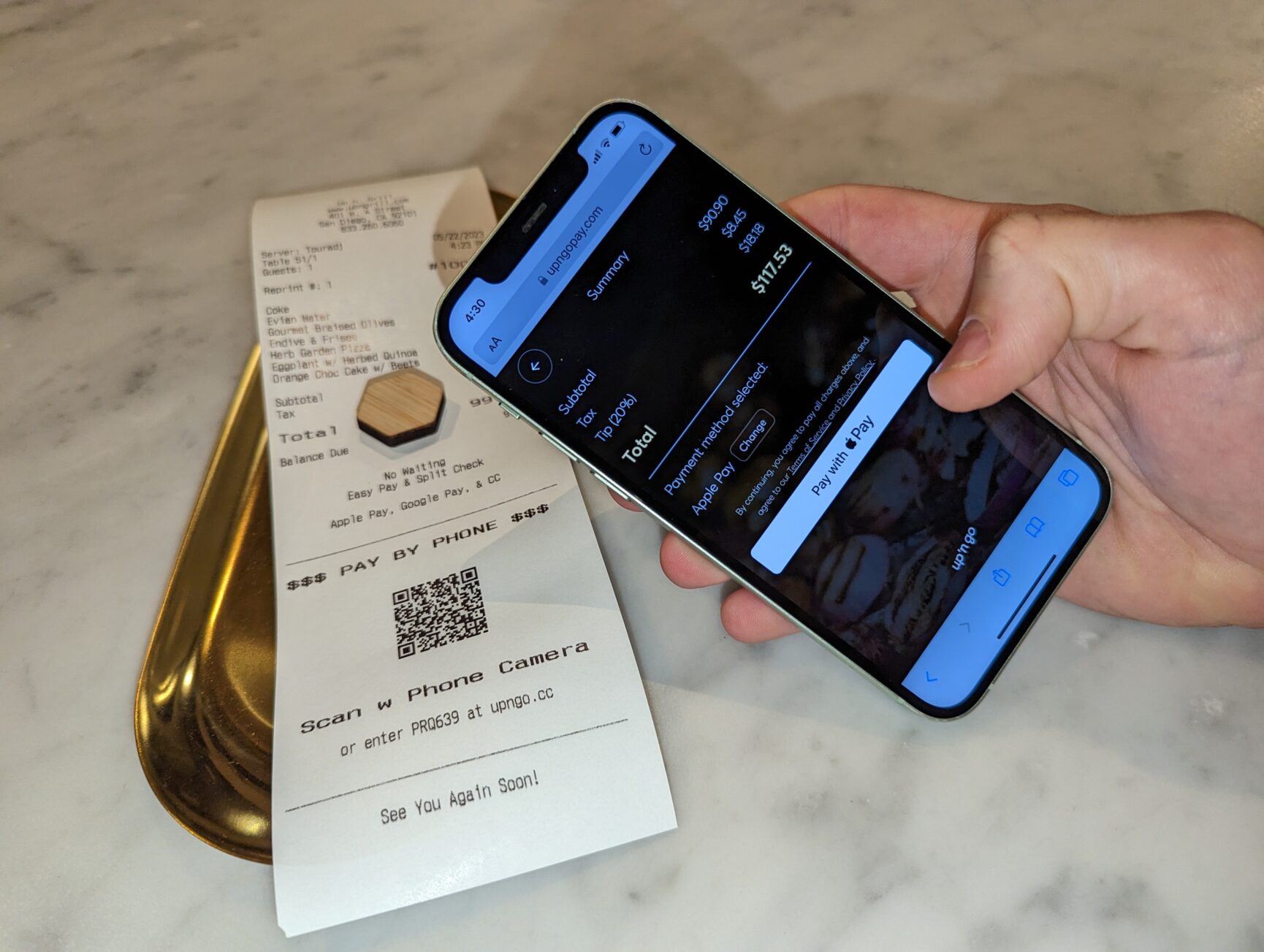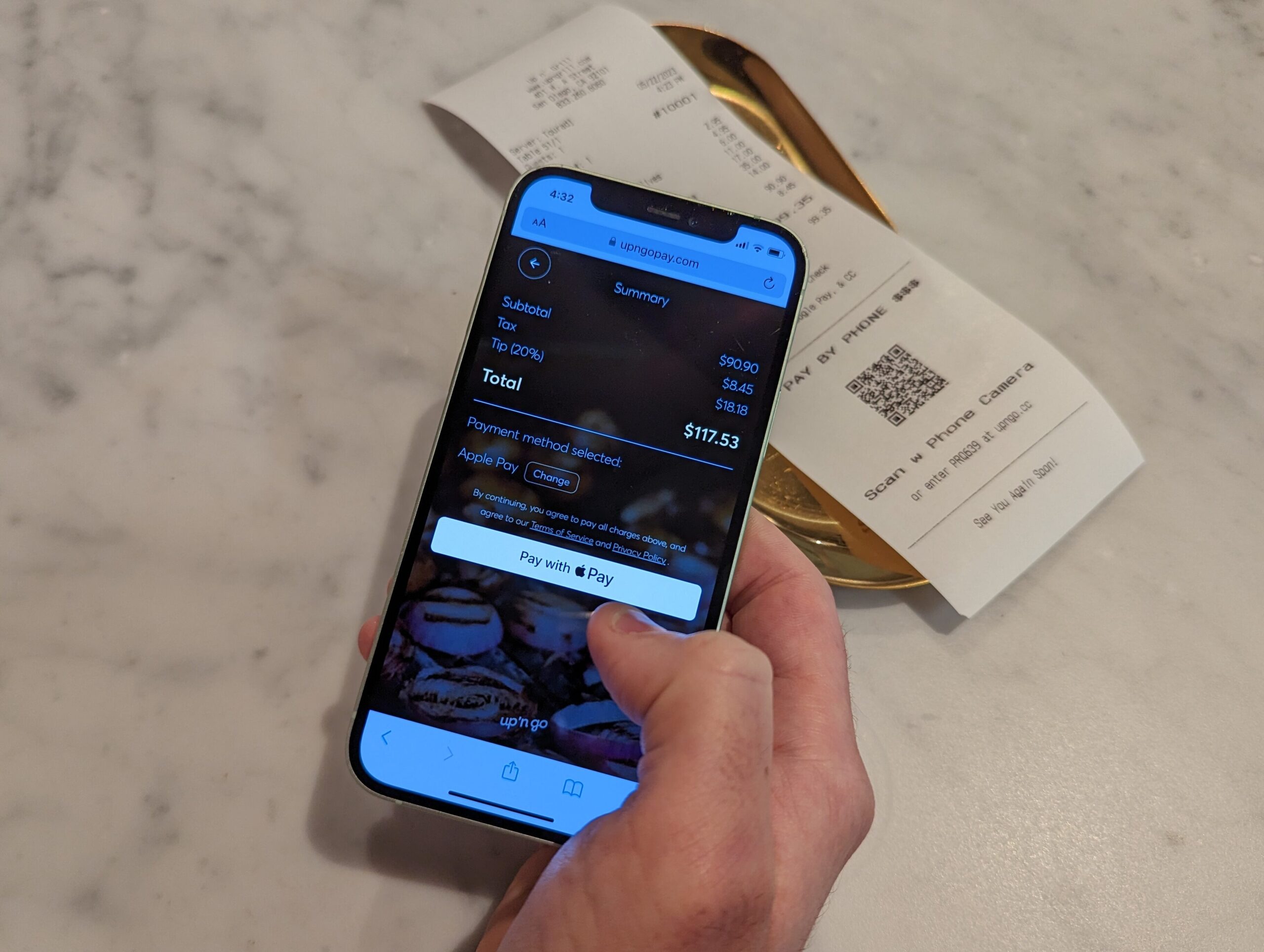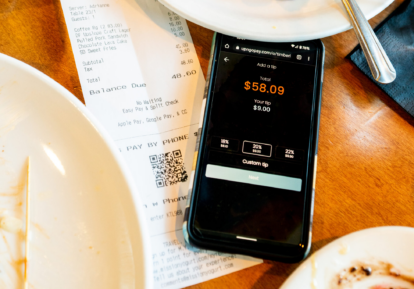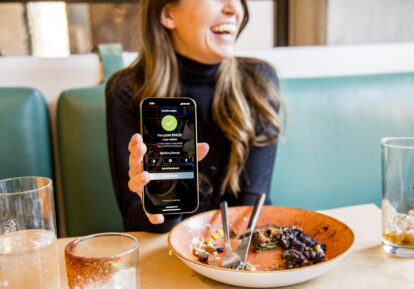
Top 3 Reasons to Accept Apple Pay in your Restaurant
Accepting Apple Pay in your restaurant can help you attract more customers, reduce credit card chargebacks, and decrease your liability from accepting credit card payments. If you’re a table service restaurant, you can choose a POS integration, such as Up ‘n go, that automatically prints QR codes on your checks. We’ve seen this method lead to over 50% of guests paying with Apple Pay.
Offering your guests Apple Pay as a QR code contactless payment solution provides numerous benefits:
Apple Pay Benefit #1: Attract more customers
People look for restaurants that accept Apple Pay, Google Pay and other digital wallets. If you accept Apple Pay and make it clear in your marketing, you’ll attract more customers to your restaurant.
Guests like Apple Pay because it’s quick, secure, and offers convenient benefits. One benefit of Apple Pay is that people don’t have to have their physical credit cards on them. We frequently hear stories about restaurant guests who forget their wallet, but are still able to pay at the table with Apple Pay. One of Up ‘n go’s clients is a breakfast restaurant that’s a frequent destination for morning joggers. These regulars have become accustomed to paying with Apple Pay. They pay from their phone so they don’t have to carry their wallets on their runs. Apple Pay lets our client earn business instead of the restaurant across the street that doesn’t accept Apple Pay.
Another big benefit of Apple Pay is that it prevents restaurants from being exposed to customers’ credit card numbers. Guests appreciate this in restaurants because they don’t like their credit cards being taken out of their sight where there’s a fear that their credit card numbers could be stolen or compromised in some other way. Additionally, Apple Pay gives guests immutable control over their payment amount and tip, so there’s no fear of those amounts being adjusted after they leave a restaurant.

Apple Pay Benefit #2: Reduce chargebacks
Apple Pay has numerous built-in security features that help prevent fraud and chargebacks in restaurants. Most of this payment protection comes from ensuring the identity of cardholders. In order to add a credit card to an Apple Pay wallet, the person adding the card has to verify that they’re the cardholder. This is often accomplished by the card-issuing bank texting a code to the cardholder, which the cardholder must then quickly type into their phone to add that credit card to their phone’s Apple Pay wallet.
The cardholder’s identity is verified again and again every single time a purchase is made. When trying to spend from a credit card in an Apple Pay wallet, the cardholder has to verify their identity by face scan, thumbprint, or password. So with Apple Pay, the cardholder’s identity is being verified twice for every transaction! That’s identity verification that you don’t get when you accept a physical credit card, even with an EMV chip reader. With chip readers, there’s no verification of cardholder identity! A credit card with a chip could be recently stolen and the chip could authorize, but the cardholder could report the card stolen later. The restaurant could lose money because it can’t prove that the person who presented the credit card was the actual cardholder. This is not the case with Apple Pay.
Because of Apple Pay’s cardholder identity verification steps, largely built on top of a credit card industry security standard called 3D-Secure (or 3DS), the person making a purchase with Apple Pay is nearly guaranteed to be the cardholder. This trust is so strong that when a restaurant guest pays with Apple Pay, there’s a fraud liability shift from the restaurant to the card issuer. This is the same liability shift that restaurants are promised, but don’t always receive, when they transition to chip readers. Anecdotally, we’ve seen that chargebacks are less likely with Apple Pay than when accepting a credit card with a chip reader.
Now you see that accepting Apple Pay in your restaurant is a great way to reduce chargebacks, both by reducing “friendly fraud” and by reducing actual credit card fraud. If a cardholder claims they didn’t authorize the payment, as is common with “friendly fraud,” the financial loss should go to the card issuer instead of the restaurant. This is because Apple Pay took many steps to ensure that the person paying with Apple Pay was the actual cardholder.
Apple Pay Benefit #3: Reduce liability
With Apple Pay, restaurants and their POS systems and staff are never exposed to actual credit card numbers. We’re not talking encrypted credit card numbers, we’re talking no credit card numbers. Every time a credit card is added to an Apple device, that combination of credit card and Apple device is issued what’s called a Device Account Number. That device account number is what’s used to make the payment with Apple Pay. Even if a device account number is exposed, it’s impossible for it to be used on any device other than on the device where it was created. It’s fairly harmless to have in your possession!
Since guests using Apple Pay are paying restaurants with their device account numbers and not their credit card numbers, restaurants don’t get exposed to credit card numbers. With Apple Pay, there are no credit card numbers to be stolen if the restaurant was to suffer a security breach.
Now you know that if you want to attract more guests to your restaurant, reduce chargebacks at your restaurant, and reduce your financial liability in case of a credit card security breach, then Apple Pay is a fantastic form of payment to accept at your restaurant!

